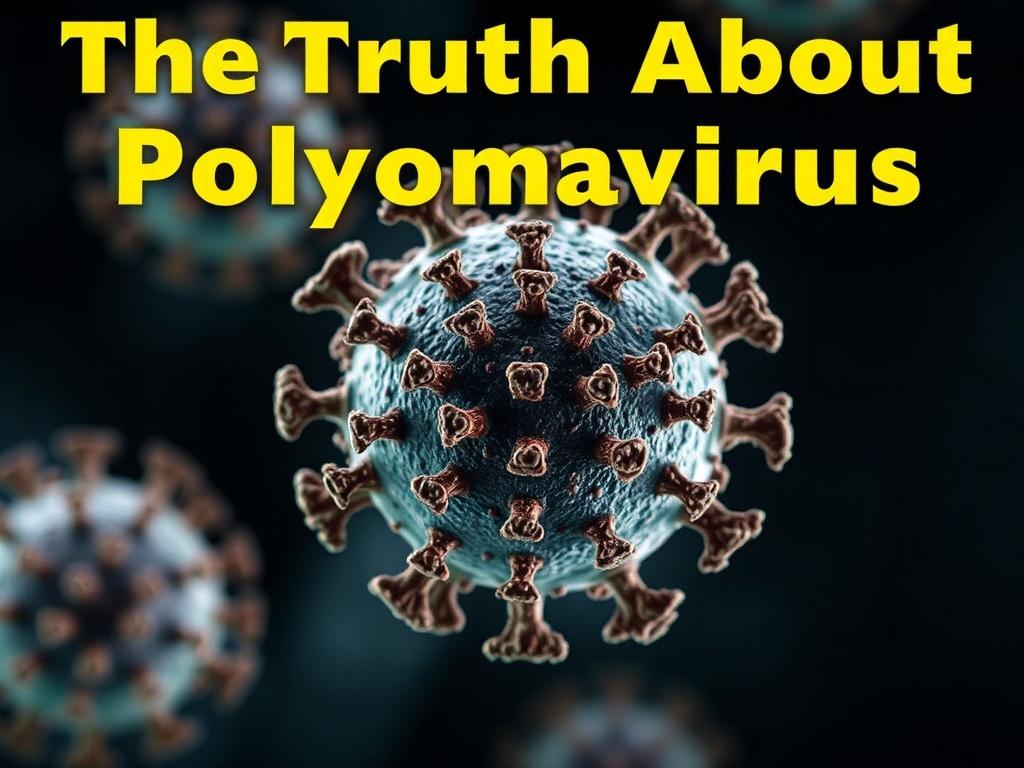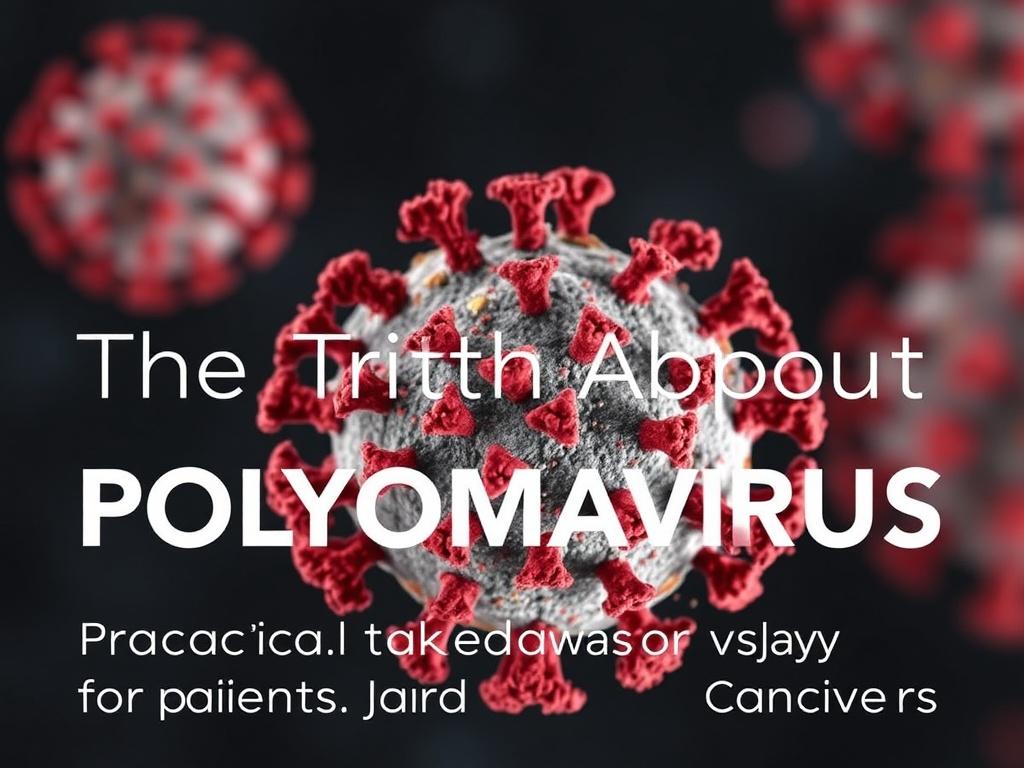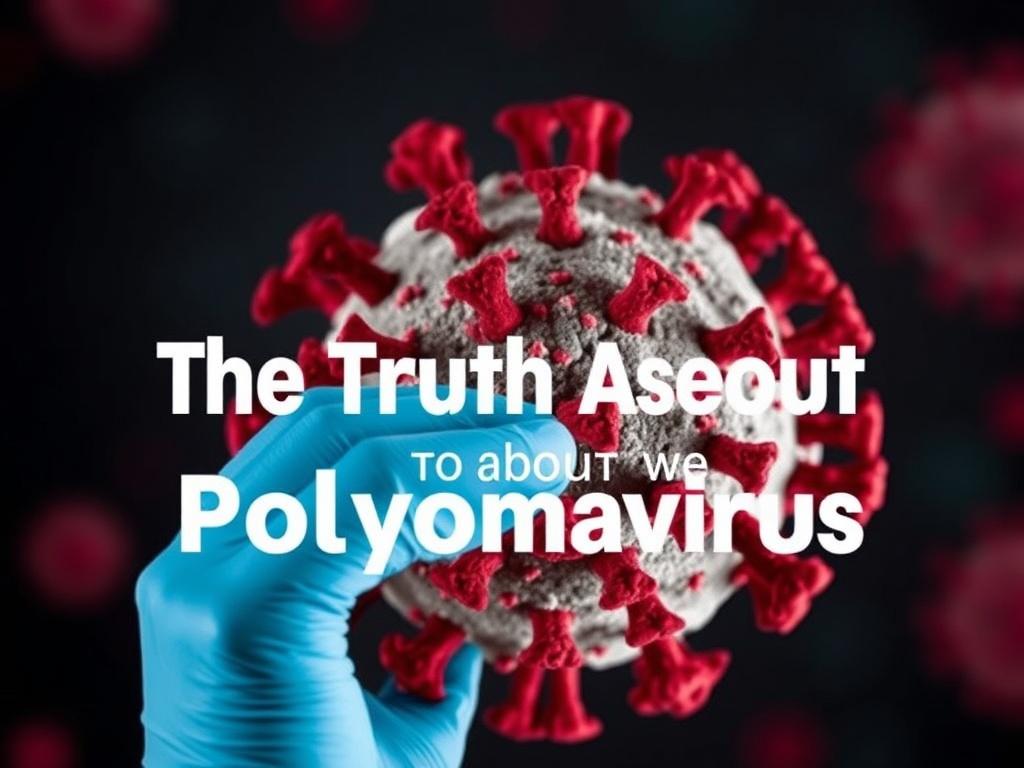Содержание
- What Are Polyomaviruses?
- Which Human Polyomaviruses Matter?
- How Do Polyomaviruses Spread?
- Diseases Associated with Polyomaviruses
- How Are Polyomavirus Infections Diagnosed?
- Treatment: What Works and What Doesn’t
- Prevention and Risk Reduction
- Why Some Polyomaviruses Cause Cancer
- Research Frontiers: What’s Next?
- Common Questions People Ask
- Diagnostics, Treatments, and a Quick Reference Table
- Stories from the Clinic: Why Context Matters
- Practical Takeaways for Patients and Caregivers
- Controversies and Common Misconceptions
- Where to Learn More and Reliable Sources
- Conclusion
SQLITE NOT INSTALLED
Polyomaviruses are the kind of invisible neighbors you didn’t know you had until they knock loudly on your life’s door. Most of us carry one or more types without a single symptom, and the science around them feels like a detective story: a quiet presence for decades, then sometimes—under certain conditions—an unexpected and serious outcome. In this article I’ll walk you through what polyomaviruses are, how common they are, what diseases they can cause, how they’re diagnosed and managed, and what researchers are doing now to pull back the curtain on these tiny, persistent viruses. I’ll keep things conversational, practical, and rooted in current scientific understanding so you can get a clear, balanced picture.
What Are Polyomaviruses?
Polyomaviruses are a family of small, non-enveloped DNA viruses with a circular genome. They are built simply but cleverly: a compact genome carrying the instructions to make proteins that help the virus enter cells, copy its DNA, and sometimes manipulate the cell’s own machinery. Humans host several polyomaviruses. Many were discovered only in the past two decades as molecular tools improved.
These viruses tend to infect people early—often in childhood—and then remain in the body, usually quietly. For most healthy people, infection is asymptomatic or produces only mild, short-lived illness. The trouble tends to start when the immune system is weakened: the virus can reactivate or, in some cases, become associated with specific cancers. What makes polyomaviruses fascinating and tricky is this balance between harmless persistence and opportunistic disease.
Basic virology in plain language
At their core, polyomaviruses have:
– A small circular double-stranded DNA genome (roughly 5,000 base pairs).
– A protein shell (capsid) that includes VP1, VP2, and VP3; VP1 is important because it binds to the host cell.
– Early genes that encode proteins called large T antigen and small t antigen. These proteins help the virus replicate and can interfere with normal cell regulation.
– Late genes that code for structural proteins used to assemble new virus particles.
Because they don’t have an outer envelope, they’re relatively stable in the environment. They enter a cell, use the host’s machinery to make more virus, then can either cause cell death and spread or establish a latent state where viral DNA persists without much activity.
Which Human Polyomaviruses Matter?
Scientists have discovered many human polyomaviruses. Here is a helpful table summarizing the better-known ones and their commonly associated conditions:
| Virus | Discovery / Notes | Common association(s) |
|---|---|---|
| JC virus (JCV) | Known for decades | Progressive multifocal leukoencephalopathy (PML) in immunosuppressed patients |
| BK virus (BKV) | Recognized early, common | Kidney transplant nephropathy, hemorrhagic cystitis (especially in bone marrow transplant) |
| Merkel cell polyomavirus (MCPyV) | Discovered 2008 | Associated with Merkel cell carcinoma (rare skin cancer) |
| Trichodysplasia spinulosa-associated polyomavirus (TSPyV) | Discovered 2010s | Rare skin condition (trichodysplasia spinulosa) in immunosuppressed patients |
| HPyV6, HPyV7, HPyV9, HPyV10, and others | Discovered more recently via sequencing | Mostly unclear; sometimes detected in skin or other tissues, research ongoing |
Who carries polyomaviruses?
Very large proportions of adults have antibodies to one or more human polyomaviruses—estimates often exceed 50–80% depending on the virus and population studied. Primary infection generally occurs in childhood or adolescence. Once infected, viral DNA may persist lifelong in certain tissues—kidney, lymphoid tissue, skin, or brain cells—usually controlled by the immune system.
How Do Polyomaviruses Spread?
Transmission isn’t always fully mapped, but the most likely routes include respiratory droplets, oral-fecal routes, and direct contact with infected secretions. Many infections are silent, so it’s hard to trace exact pathways. Because these viruses are stable outside the body (no envelope), they can persist on surfaces longer than enveloped viruses, but casual household contact does not usually lead to severe disease for healthy people.
- Primary infection: often in childhood, mild or unnoticed.
- Latency: virus persists in tissues (kidney, lymphoid organs, skin, brain).
- Reactivation: occurs when immunity wanes—after organ transplant, chemotherapy, certain immunomodulatory drugs, or advanced HIV/AIDS.
Diseases Associated with Polyomaviruses
Polyomaviruses are usually harmless, but several clinically important conditions are associated with them:
Progressive multifocal leukoencephalopathy (PML) — JC virus
PML is a rare, often devastating brain infection caused by reactivation of JCV in the central nervous system, typically in people with severe immunosuppression: advanced HIV, hematologic malignancies, or patients receiving certain immune-modifying therapies (notably natalizumab and some other monoclonal antibodies). Symptoms depend on brain areas involved and can include confusion, weakness, speech problems, visual changes, and coordination issues. Diagnosis relies on MRI imaging, detection of JCV DNA in cerebrospinal fluid (CSF) by PCR, and sometimes brain biopsy.
BK virus—kidney and bladder complications
BK virus most commonly causes trouble in the urinary tract of immunosuppressed patients. In kidney transplant recipients, BKV reactivation can lead to BK virus nephropathy, which may damage the allograft and lead to loss if unrecognized. In bone marrow transplant patients, BKV can cause hemorrhagic cystitis—painful bloody urine. Monitoring viral load in blood or urine helps detect early reactivation.
Merkel cell carcinoma (MCPyV)
Merkel cell polyomavirus was discovered within tumor tissue and is implicated in the pathogenesis of Merkel cell carcinoma, a rare but aggressive skin cancer that typically affects older adults or those with immunosuppression. In many tumors the viral genome is integrated into the host DNA, and viral proteins (truncated large T antigens) contribute to tumor development.
Other rare or emerging associations
Trichodysplasia spinulosa (TSPyV) causes distinctive spiny follicular papules in severely immunosuppressed patients. Several other human polyomaviruses are being investigated for possible links to skin conditions, respiratory disease, and other cancers, but evidence varies.
How Are Polyomavirus Infections Diagnosed?
Diagnosis depends on the suspected disease and affected organ. Common tools include:
- PCR testing for viral DNA in blood, urine, CSF, or tissue—this is the backbone of modern diagnostics for polyomaviruses.
- Serology—antibody testing shows prior exposure but often does not indicate active disease.
- Imaging—MRI in PML to visualize white-matter lesions; ultrasound or biopsy for kidney issues.
- Histopathology—tissue biopsy can show characteristic viral inclusion bodies and, with immunohistochemistry, detection of T-antigen proteins (SV40 staining cross-reacts with some polyomaviruses).
Understanding viral load dynamics is important: for BK virus in transplant medicine, rising blood viral load often precedes clinical nephropathy and is used to guide intervention.
Treatment: What Works and What Doesn’t
There is no universally effective, approved antiviral drug that eradicates polyomaviruses. Treatment strategies depend on the disease and often focus on restoring immune control.
- Immune reconstitution is the most reliable strategy for PML: stop or reverse the immunosuppressive trigger when possible. For natalizumab-associated PML, plasma exchange to remove the drug can facilitate immune recovery.
- For BK virus nephropathy, the primary approach is reducing immunosuppression carefully; in some cases clinicians use leflunomide, cidofovir, intravenous immunoglobulin (IVIG), or ciprofloxacin empirically, though evidence is mixed and side effects matter.
- For Merkel cell carcinoma, treatment is surgical excision, radiation, and systemic therapies for metastatic disease; immune checkpoint inhibitors (anti-PD-1/PD-L1) have shown promising results and can be particularly effective because the tumor often expresses viral antigens that attract immune responses.
- Supportive care for hemorrhagic cystitis (hydration, bladder irrigation, pain control); antiviral options remain limited.
Researchers have tried various antivirals (cidofovir, brincidofovir) and immunotherapies for PML and BK infection with varying success, but no standard direct antiviral with high efficacy has emerged. The central theme is that interventions that restore antiviral immune function matter most.
Practical clinical monitoring strategies
In transplant medicine, routine monitoring of BK viral load in blood and urine is standard in many centers. Early detection allows reduction of immunosuppression before irreversible kidney damage occurs. For patients on biologic therapies known to increase PML risk, clinicians weigh the benefits and risks and monitor for neurological symptoms, sometimes with baseline and follow-up MRI or JC virus antibody testing.
Prevention and Risk Reduction
Because polyomaviruses are common and often harmless, population-level prevention is not practical right now. However, in clinical settings where severe disease is possible, active steps can reduce risk:
- Screening and monitoring in transplant recipients (BK viral load) to catch reactivation early.
- Careful immunosuppression management: use the lowest effective dose and choose agents with known risk profiles.
- For patients starting immune-modulating therapies linked to PML, clinicians assess baseline risk factors and counsel about symptoms. Some specialists use JC virus antibody testing to stratify risk.
- Infection control basics: good hygiene, handwashing, and avoiding contact with bodily fluids when caring for high-risk patients.
There are no licensed vaccines for human polyomaviruses as of now, though vaccine strategies are an area of research, especially for virus-driven cancers.
Why Some Polyomaviruses Cause Cancer
A key insight from polyomavirus biology is that viral proteins (especially large T antigen) can disrupt the cell cycle. In certain situations, the viral genome integrates into host DNA and expresses truncated viral proteins that drive uncontrolled cell growth. That’s the model for Merkel cell carcinoma: integration of the MCPyV genome and expression of oncogenic truncated large T antigens contribute to tumor formation. But cancer development typically requires multiple steps and is more likely in older or immunosuppressed individuals.
Oncogenesis in simple terms
Imagine the virus handing the cell a bad set of instructions: viral proteins inactivate tumor suppressor pathways (like p53 and Rb), allowing cells to divide unchecked. In healthy people the immune system usually clears or controls such abnormal cells; when immune surveillance is compromised, transformed cells can expand and form cancers. That’s why immune-based cancer therapies can be particularly effective for virus-associated cancers.
Research Frontiers: What’s Next?
Polyomavirus research is active and multifaceted. Current directions include:
- Antiviral drug development targeting viral replication proteins or T antigens.
- Immune-based therapies — therapeutic vaccines or adoptive T-cell therapies that boost antiviral and antitumor immunity.
- Understanding latency and reactivation triggers to prevent disease in high-risk groups.
- Better diagnostics — more sensitive and specific PCR assays, and biomarkers to predict disease progression.
- Investigating the roles of newly discovered human polyomaviruses in disease and health.
There’s also interesting basic science on how polyomavirus microRNAs help the virus evade immune detection and how viral-host protein interactions can be drug targets.
Common Questions People Ask

Can I get sick from polyomaviruses if I’m healthy?
For most healthy people, existing polyomavirus infections remain silent. Serious disease predominantly arises when immunity is substantially weakened.
Should transplant donors or recipients be tested for polyomaviruses?
In many transplant programs, recipients are monitored for BK virus reactivation after transplantation because early intervention can prevent kidney damage. Universal pre-transplant screening is not uniform, but many centers test and monitor according to protocols.
Are there lifestyle changes I can make?
General measures that support immune health—managing chronic conditions, avoiding smoking, good nutrition, adequate sleep—are sensible. For people with severe immunosuppression, following infection prevention advice from healthcare teams is important.
Diagnostics, Treatments, and a Quick Reference Table
Here’s a summary table that clinicians and informed patients may find useful as a quick reference:
| Condition | Typical Patient | Key Diagnostic Tests | Main Management Strategies |
|---|---|---|---|
| PML (JC virus) | Severely immunosuppressed (HIV, natalizumab, etc.) | MRI brain, CSF PCR for JCV, sometimes brain biopsy | Restore immune function (stop offending drug), supportive neurology care, investigational antivirals |
| BK virus nephropathy | Kidney transplant recipients | BK viral load in blood/urine by PCR, allograft biopsy | Reduce immunosuppression, consider antiviral/adjunctive agents, monitoring |
| Merkel cell carcinoma (MCPyV) | Older adults, immunosuppressed | Biopsy, immunohistochemistry, PCR for viral DNA | Surgery, radiation, immunotherapy (checkpoint inhibitors) |
Stories from the Clinic: Why Context Matters
Because polyomaviruses are pervasive but rarely harmful in healthy people, their clinical stories cluster around a few themes. A kidney transplant recipient comes in for routine labs and is found to have an increasing BK viral load—early action with immunosuppression adjustment prevents graft loss. A patient on a monoclonal antibody for autoimmune disease develops subtle neurological symptoms; early recognition and drug withdrawal, plus rapid immune restoration, can be life-saving in PML. An older patient develops a rapidly growing, painless skin nodule—biopsy reveals Merkel cell carcinoma, and immunotherapy becomes a key weapon. Each case underscores that timing, clinical context, and immune status shape outcomes.
Practical Takeaways for Patients and Caregivers

- If you’re healthy, polyomaviruses are unlikely to cause trouble. No routine testing is needed.
- If you’re about to start powerful immunosuppressive therapy or have a transplant, discuss risks with your team. They may recommend monitoring strategies or baseline tests.
- Report new neurological symptoms (weakness, confusion, speech or vision changes) promptly if you’re immunosuppressed—the earlier PML is recognized, the better the chances of managing it.
- For transplant patients, keep regular follow-up appointments and lab tests; early detection of BK reactivation can prevent serious graft damage.
- Ask your provider about clinical trials if you face a polyomavirus-related disease with limited treatment options—research is active and evolving.
Controversies and Common Misconceptions
There are a few areas of confusion worth clarifying:
“Is every Merkel cell carcinoma caused by a virus?”
Not always. Many Merkel cell carcinomas harbor integrated MCPyV and are virus-driven, but some are not and arise through ultraviolet (UV)–induced mutations. Viral status can influence biology and perhaps therapy responses.
“Can we develop vaccines?”
Vaccines could make sense, especially to prevent virus-driven cancers or severe disease in high-risk groups. But given the high prevalence of exposure and typically benign natural history, designing, testing, and approving vaccines is complex and remains an active research area rather than an imminent clinical reality.
There are promising leads and investigational agents, but drug development is slow and challenging. Much of current progress is in immune-based strategies rather than a simple antiviral pill that clears polyomaviruses.
Where to Learn More and Reliable Sources
If you want deeper dives, good sources include major infectious disease and transplant society guidelines, peer-reviewed journals, and reputable public health organizations. Your treating physician or transplant team is also an invaluable resource because they can give individualized information based on your circumstances.
Conclusion

Polyomaviruses occupy an intriguing space in medicine: omnipresent, mostly silent, but capable of causing serious disease when the body’s defenses falter. They teach us about viral persistence, how the immune system keeps pathogens in check, and how disruption of that balance can unmask surprising threats—from opportunistic brain infections to virus-associated cancers. For most people, these viruses are harmless passengers. For patients and clinicians working in transplant, oncology, and immunotherapy fields, awareness, monitoring, and timely action are critical. Science continues to move forward—new diagnostics, immune therapies, and a deeper understanding of how these viruses work are reshaping care. If you or a loved one are at higher risk, talk to your healthcare team; if you’re healthy, the single best approach is to focus on overall wellness and stay informed.





